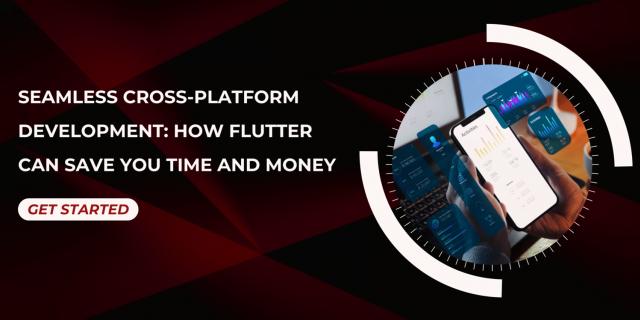Cross-border payments now form a regular feature of corporate activities in today's global economy. The efficiency and cost-effectiveness of your cross border solution will significantly influence your business, whether you are conducting transactions with worldwide partners, paying foreign suppliers, or reimbursing foreign staff.
Reducing remittance expenses and guaranteeing seamless, timely transactions depend on streamlined payments via an international remittance solution. The Digital Remittances market in the world is projected to grow by 4.76% (2024-2028), resulting in a market volume of US$181.60bn in 2028.
This blog shares the best ways for streamlining your cross-border payment systems and reducing remittance cost.
Understanding the Importance of Streamlining Cross-Border Payments
Cross-border payments are the movement of money between companies spread across many nations. These deals often present difficulties like changing currency rates, legal requirements, and hefty transaction costs.
Simplifying your cross-border payment procedures can help you eliminate these difficulties, save expenses, and guarantee quick and safe handling of your foreign transactions.
1. Choose the Right International Remittance Solution
Choosing a suitable international remittance solution comes first in simplifying cross-border payments. Given the many choices from digital platforms to conventional bank transfers, you must choose a solution that fits your business requirements. Think about things like:
Cost: Choose a provider with reasonable rates of exchange and low costs. Reducing remittance expenses has to be the first concern.
Speed: Make sure the solution offers quick transactions to prevent payment processing delays.
Security: Select a platform with robust security features to guard your transactions from fraud and online dangers.
Accessibility: Your receivers as well as you should find the answer easily available.
2. Optimize Your Payment Processes
Simplifying cross-border payments depends mostly on your payment systems' efficiency. Automation is one of the best approaches to simplifying cross-border payments.
Automating regular transactions can help guarantee timely payments, save time, and reduce hand-made mistakes. Many foreign remittance systems have tools that let you easily handle many currencies, monitor transactions, and set automated payments.
Provide uniform methods for handling payments made across borders. This includes defining precise policies for starting payments, confirming transaction information, and managing any problems that develop. Standardization lowers the possibility of mistakes or delays and helps to guarantee consistency.
3. Monitor Exchange Rates
Cross border money remittance solution payments depend heavily on exchange rates, as they directly determine the amount your receivers receive. Regular monitoring of currency rates can help you simplify your payments and save on remittance expenses.
For a future purchase, a forward contract lets you fix an exchange rate. This might especially help you if you expect changes in the value of money that can raise your expenses. Getting a good rate ahead can help you guard your business from negative market swings.
Options and swaps are two examples of currency hedging techniques that help you control the risk related to changes in exchange rates. These techniques could provide a better defense against currency market volatility, even if they may require more advanced financial understanding.
4. Ensure Compliance with Local Regulations
Every nation has unique rules for cross border remittance, including tax legislation, reporting requirements, and anti-money laundering (AML) rules. Following these rules can help avoid legal problems and fines.
Particularly in the field of international finance, regulatory surroundings might alter often. Maintaining knowledge of any changes in the laws of the nations you do business in is very vital. Another way you may negotiate these challenges is by working with a remittance provider that provides compliance assistance.
Regulatory compliance requires accurate record-keeping. Every cross-border transaction, including transaction amounts, recipient data, and currency rates, must be fully recorded. Furthermore, correct paperwork can help your business in the case of a regulatory investigation and facilitate audits.
5. Leverage Technology for Enhanced Transparency
Effective cross-border payments depend heavily on transparency. Technology can enable you to monitor payments in real time and provide your stakeholders with comprehensive data, therefore increasing the openness of your transactions.
Many foreign remittance companies include tracking tools that enable you to trace your payments from start to finish. These instruments provide real-time updates, therefore lowering uncertainty and increasing your transaction control.
Transparency depends on keeping open lines of contact with your suppliers, overseas colleagues, and beneficiaries. Tell them about estimated money arrival, payment dates, and any delays. Effective communication guarantees alignment and helps to develop trust among all the participants.
6. Build Strong Relationships with Your Remittance Provider
Your connection with your foreign remittance provider will greatly influence the cost-effectiveness and efficiency of your cross-border solution. Establishing close cooperation with your supplier guarantees the finest support and service.
Customized service from a supplier will enable you to promptly handle any problems and negotiate complicated deals. Look for companies that assign specific account managers or give tailored business support tools.
Suppliers often add new capabilities and features to remittance systems. Staying current with these upgrades guarantees that you are fully using the technologies meant to simplify your payments and save expenses.
7. Plan for Contingencies
Unexpected problems still occur regardless of how simplified your payment systems are. Contingency planning guarantees that your business can keep running without problems even under trying circumstances.
Having backup payment options is usually a smart idea. Whether your main solution runs into problems or a backup remittance provider or another payment method, having choices guarantees that you may keep paying even in such cases.
Review the way your cross-border payment systems are performing often. Point out any reoccurring problems, including unanticipated costs or delays, and take early care of them. Constant observation and development help guarantee that your payment systems stay successful and reasonably priced.
Conclusion
Maintaining solid business ties, lowering expenses, and increasing efficiency all depend on simplifying cross-border payments via an international remittance service. By implementing the best practices described in this article -choosing the correct solution, optimizing your payment processes, monitoring exchange rates, ensuring regulatory compliance, leveraging technology, building strong provider relationships, and planning for contingency, you can properly handle your cross-border transactions and position your business for success in the worldwide market.
Your business objective is to lower remittance costs while guaranteeing transparent, speedy, and safe payment processing. Your flexibility and aggressive approach to cross-border payments will depend on your ability to maintain a competitive advantage in the ever-changing global economy.










